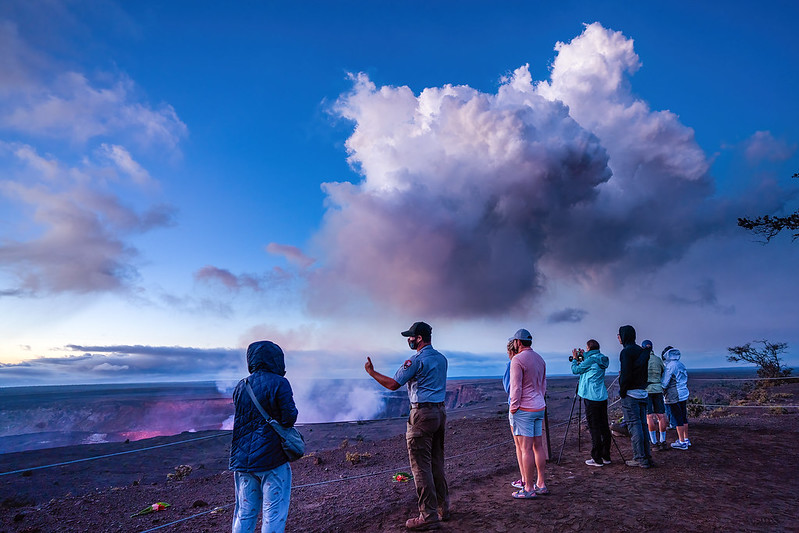Park Officials Offer Guidance on How to View Latest Kīlauea Eruption
Park officials are advising visitors where they safely view Kīlauea’s new lava lake eruption within Hawaiʻi Volcanoes National Park.
Those who come to the park after dark will see a “magnificent reddish-orange glow” that fills the night sky above the 127-acre lava lake at the Halemaʻumaʻu crater. Jagged crater walls are illuminated, showing the scars from the 2018 summit collapse, park officials say.
During the daylight, volcanic gas and steam can be seen billowing out of Halemaʻumaʻu, and the entire summit caldera, Kaluapele, is fully visible. Koaʻe kea, white-tailed tropicbirds, are often observed flying above the crater.
The best eruption viewpoints day or night are along Crater Rim Trail, and include Uēkahuna, Kīlauea Overlook, Wahinekapu (Steaming Bluff), Kupinaʻi Pali (Waldron Ledge), Keanakākoʻi and other overlooks. Glimpses of lava from the rising lava lake were spotted periodically from Keanakākoʻi and Uēkahuna on Thursday and Friday.
There is limited parking at Devastation Trail parking lot, used to access Keanakākoʻi.
Officials advise checking the weather prior to coming to the park as rain and clouds are not uncommon at Kīlauea, and conditions can change quickly. The 4,000-foot summit can also be chilly.
“Volcanic eruptions can be hazardous and can change at any time,” park officials say. “Stay on marked trails and overlooks, and avoid earth cracks and cliff edges.”
Officials ask parkgoers not to enter closed areas. Maintain social distance of six feet and wear a mask to reduce the spread of COVID. Stay home if you are feeling sick.
Additionally, visitors are asked to be respectful.
“Park landscapes are sacred places for many people,” officials say. “Please be respectful and allow them to practice their traditions privately.”
For more information about the park and the new eruption, click here.
Sponsored Content
Comments









